Muscle Chains: A Beginners guide to Canine Biomechanics
Watch this video. What muscles do you think are working?
Most people immediately guess SHOULDERS and thats not wrong. But it’s also not complete!
The body is a system. Nothing works in isolation.
Because the shoulder muscles cannot move the humerus (upper arm bone) without applying forces to the shoulder blade… and the shoulder blade cannot stabilize against those forces without applying pressure to the rib cage… the shoulder muscles actually require a network of assisting muscles in order to function properly. So the saying “the head bone is connected to the shoulder bone”, and so on is actually correct!
Enter the idea of muscle chains. Just like links in a piece of metal chain overlap, connecting one link to the next, forming a long, flexible, STRONG system… Muscle chains work the same way. The musculature in the shoulder, overlaps with the musculature on the shoulder blade. That shoulder blade musculature attaches to the rib cage, overlapping with the abdominal and back muscles, ultimately anchoring the shoulder joint to the spine. Spine / core muscles overlap and link to the pelvis. The muscle chains in the pelvis link to the upper thigh, past the stifle and all the way down into the rear feet.
Here’s a photo series from my anatomy book showing the complex overlapping the muscle chains that connect the thoracic limb into the core and the core to the pelvic limb. And these are just the superficial muscle chains!!
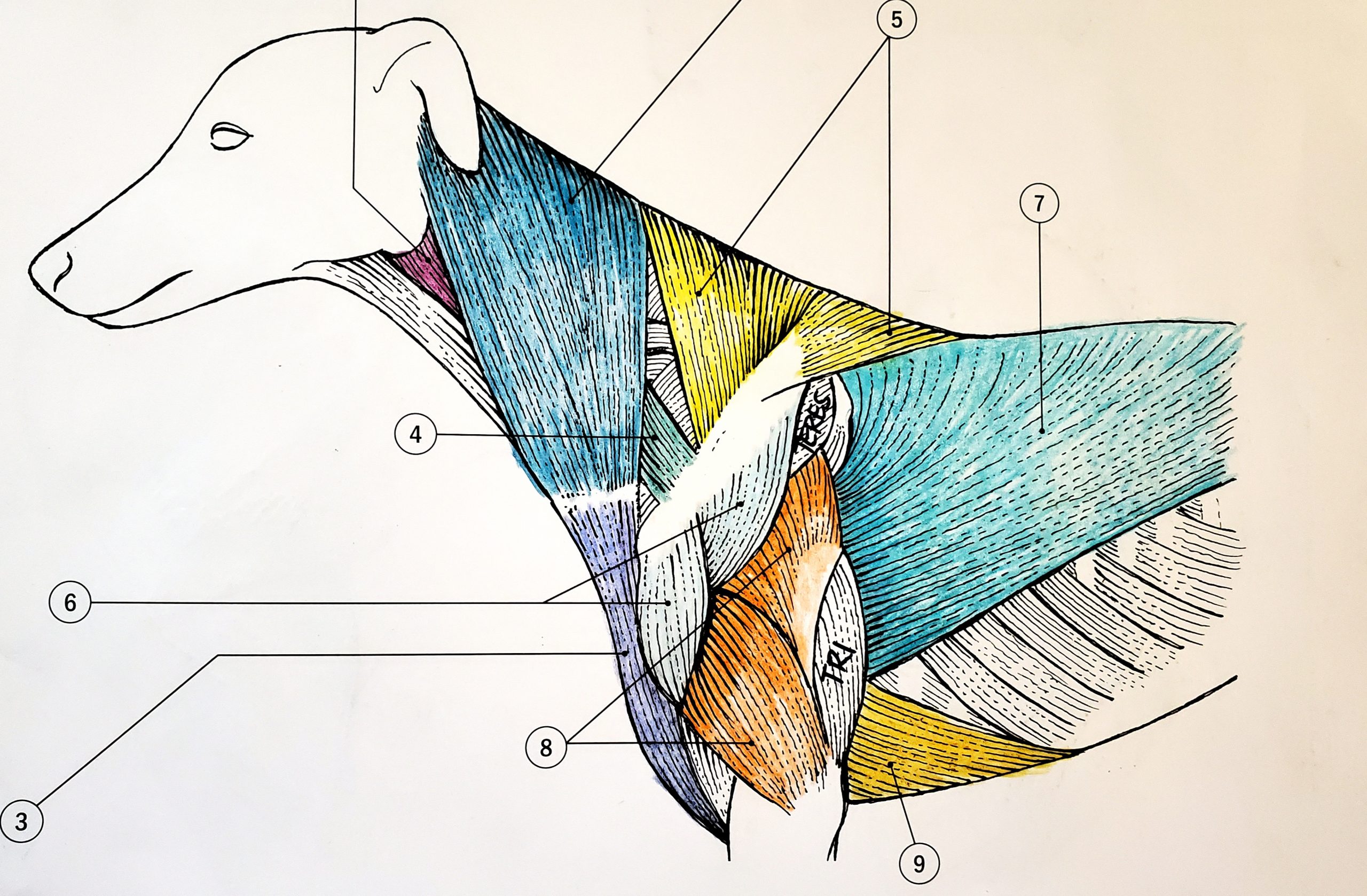
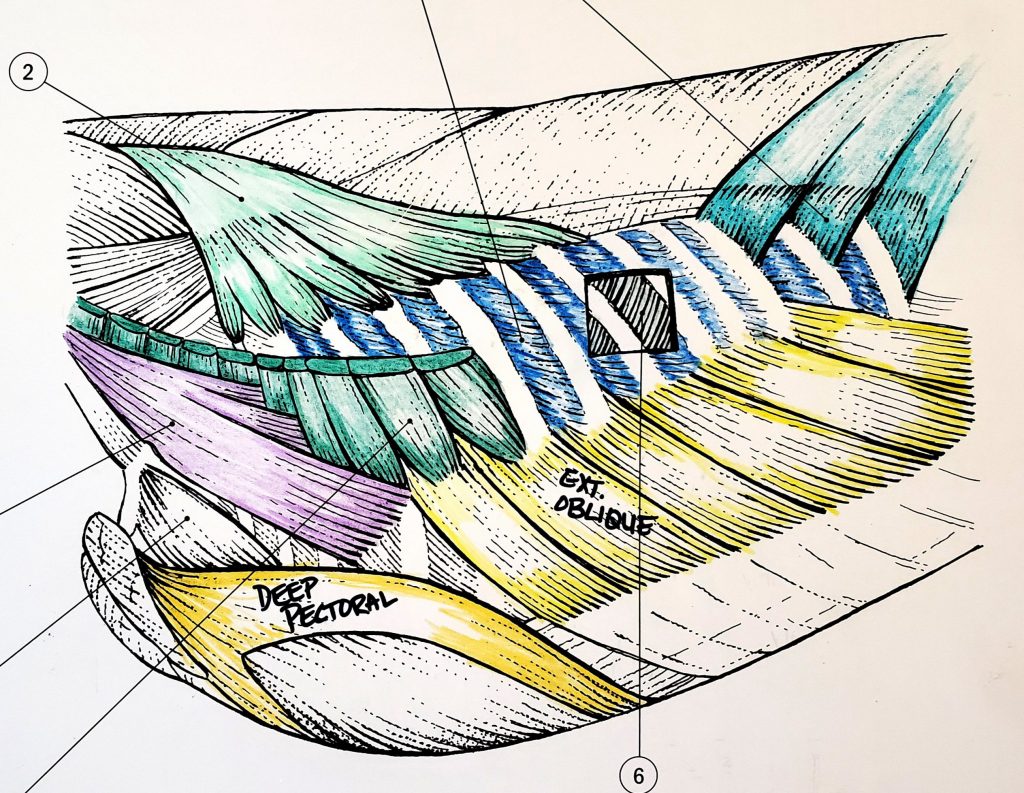
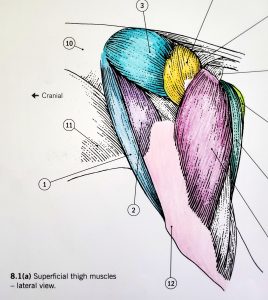
Here’s a link to the canine anatomy book I prefer
Only as strong as the weakest link
When each link in the muscle chain is strong and supple, canine biomechanics are optimized. The dog is able to then perform all kinds of complex movements because the SYSTEM is able to handle the load, and absorb/transmit forces efficiently. *BUT* when the system is out of balance, when one link in the muscle chain becomes injured, tired, sore or demoted, the surroundings links have to “pick up the slack”. Those links become overloaded, and the chain becomes dysfunctional… or worse non-functional. This is where the dog starts to compensate.
See more on how the brain demotes weak muscles, and what can be done about that HERE.
Core Engagement: The HUB of Canine Biomechanics
If you watch this video, you’ll definitely notice Ron Burgundy’s shoulder muscles engage… but you’ll also see his CORE muscles engage! And those core muscles are WAY bigger!
If the shoulder muscles are the main working muscles in this exercise, why are we seeing so much core action??? This is because the core is the hub of the body, and all muscle chains ultimately connect to the spine.
All forces that impact the canine limbs (ground forces and gravity forces), are either absorbed by the core, or transmitted through the core muscles.
In this video, when RB is stepping weight down into the left thoracic limb (TL) the shoulder muscles are engaging eccentrically (resisting movement) to put on the brakes and STOP his body from moving to the left. His core muscles are also responding to absorb that lateral momentum. Thats why you can see the serratus ventralis, quadratus lumborum, and external oblique so clearly defined!! Those muscles are working HARD to assist the shoulder muscles. Because remember the body is a system, and nothing works in isolation.
When Ron Burgundy begins to push off with the left TL, engaging the shoulder muscles concentrically (creating movement), the core muscles engage to stabilize the spine. This allows the spine to move as one solid, transmitting the forces generated by the shoulder muscles THROUGH the core and into the rear legs (pelvic limb/ PL).
If the muscles in the core are dysfunctional, and fail to absorb or transmit forces effectively, the whole system becomes dysfunctional. This is why an injury to the psoas/iliopsoas creates so many problems!! More on the psoas later…
Sooo… The Arm Bone is connected to the Leg Bone!?!?
YES!!! The front legs / thoracic limbs are connected to the rear legs / pelvic limbs, via the muscle chains in the core. This allows the forces generated by the front legs to be transmitted through the spine and into the rear legs… and back again throughout the system. This is what allows for locomotion. When we’re talking about canine biomechanics, its THIS transfer of forces and absorbing of forces that were referring to!
Watch this last video clip
For the most part, the legs aren’t moving in this exercise… but Ron Burgundy’s leg muscles are DEFINITELY still engaging! What’s with that??? I thought this was a SHOULDER exercise???
Those legs are the ANCHOR of the muscle chain. The leg muscles pointed out in the video are working hard to keep RB’s body fixed in space while the shoulder muscles generate lateral force, and the core muscles transmit those forces to the muscle chains in the legs. Since the legs are the anchor point of the exercise, it the job of the gluteals, quads and hamstrings (and a bunch of smaller stabilizers) to absorb the remaining forces and stabilize the system.
Balancing forces between Muscle Chains is critical
Because all the muscle chains in the body are linked together, and work as a system to affect canine locomotion, all the muscles are participating one way of another. Sure, some muscles are working harder than others or are targeted by certain movement patterns. But, the integrated nature of the body is such that it’s the balance within the system of muscle chains that produces functional canine biomechanics, and sets the dog up for success in sports and at home. Conversely, a system with one or more weak links must offload to compensate. The neighboring links then become tight, hypertonic or inappropriately dominant, and a pattern of muscle imbalance is created. Since muscle imbalance is the #1 predictor of injury, identifying and addressing muscle imbalance is critical for performance, health and quality of life.
This is why working with a canine fitness trainer is key. For the system to be optimized, and operate efficiently, it must be balanced. Canine fitness trainers (CPCFT or CCFT) have been trained to identify the pattern of imbalance that leads to dysfunction and ultimately injury. Implementing specific movement patterns, while limiting/avoiding others is the key to restoring balance through the muscle chains. Maintaining specific alignment, through placement of reward, prop setup and handler location helps to further customizes each exercise. The devil is definitely in the details.
So, to link this all together
- The body is a system, with a complex web of muscle chains working together to support optimal canine biomechanics.
- Each muscle links with its neighbor, and must be balanced in strength, stability and flexibility. Any area that’s deficient offloads to its neighboring link, and a muscle imbalance is born.
- The core is the hub, where all muscle chains connect. It is used to absorb and transmit forces creating coordination and locomotion. A dysfunctional core, means dysfunctional limbs. The chains can’t operate correctly without their hub.
- Balance through the muscle chains is critical to smooth, functional, effortless biomechanics, and a reduced injury risk. An imbalance in the muscle chains leads to compensation, and can take some professional guidance to unwind.
I hope that was a helpful explanation! If you have any questions or comments use the comment box below. I’m always available to help!!
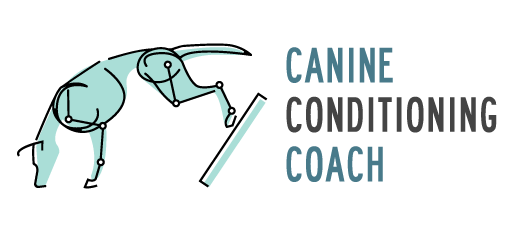
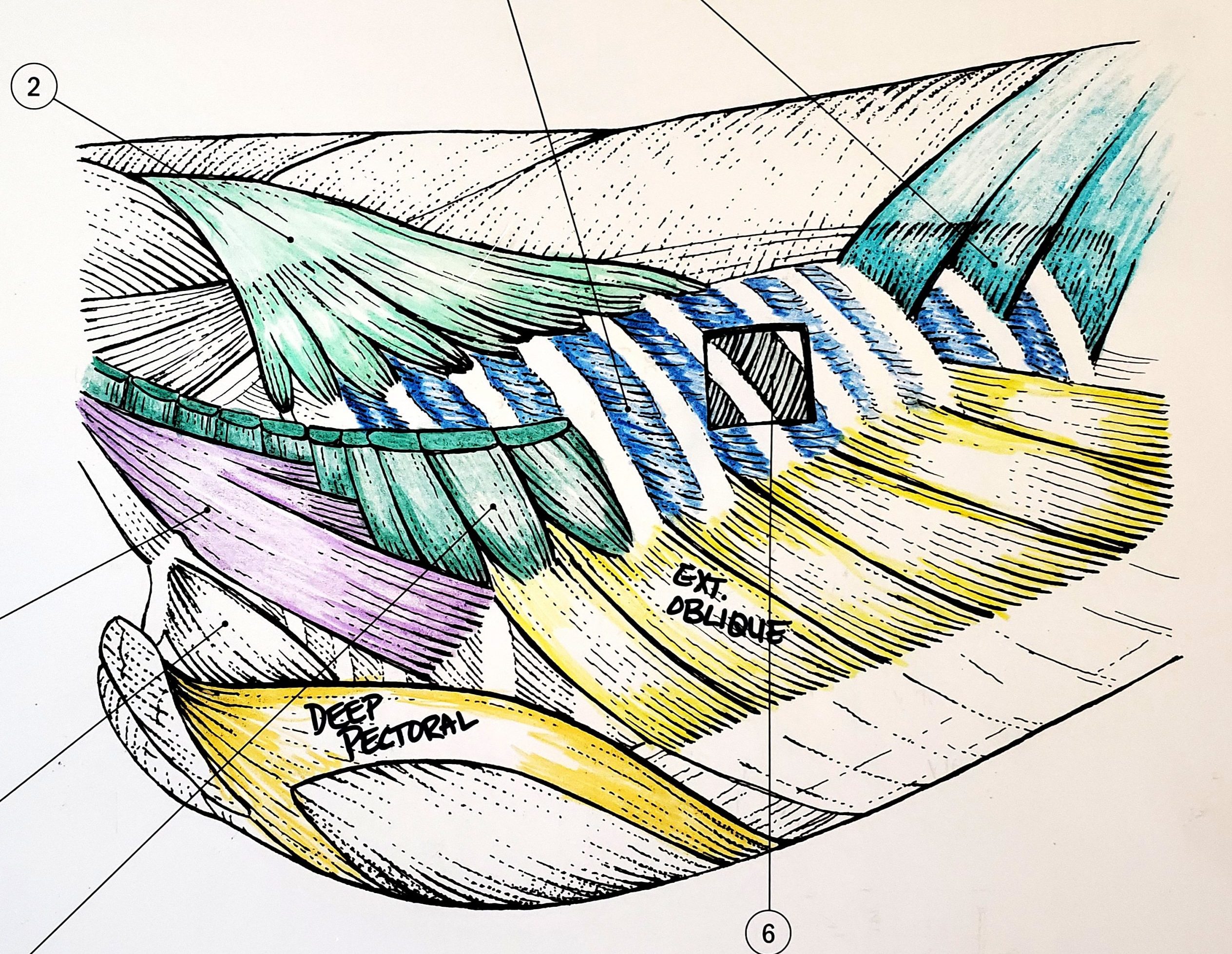
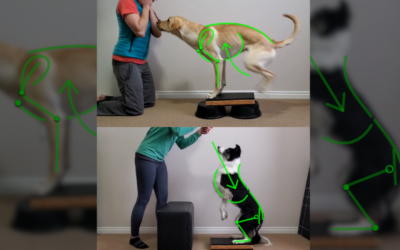
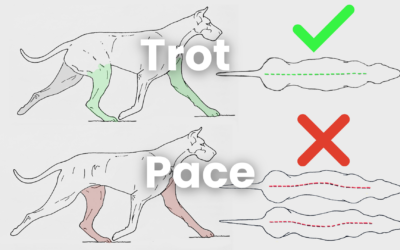
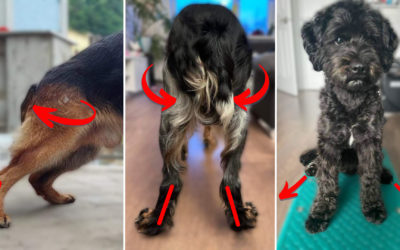
Hi Anna Lee 🙂
This is so good, I have read it many times and each time I put a piece new of the puzzle in my mind. Very clear and understandable and so important subject!
Hey Susann! I’m so glad you found this post helpful! Starting to see how the body is a system is SO cool!! And can really help to integrate the various adjustments to props, placement of reward and handler motion to affect the body system as a whole!